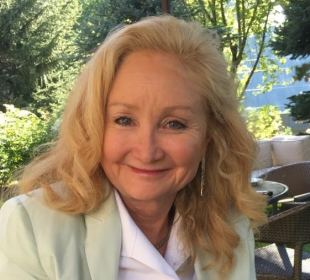By Eric Valentine
Valley folks have been so longing for lifestyles to return to normal in 2021, they may not be ready for some landscape changes that could take effect in the new year. From the top of Blaine County all the way to Camas County, a number of projects are proposed. Here are three:
Soldier Airport Marches On

As reported, a proposal to construct a private airport that could land jumbo jets in Fairfield continues to take off. The 1,600-acre development would construct—among other things—an 8,500-foot-long, 350-foot-wide runway that can land the commercial airplanes Friedman Memorial Airport in Hailey can’t. Yet, in recent months, the project has run into some local turbulence by residents, some of whom live close to the proposed airport.
So, at its Dec. 21 commissioners meeting, Camas County leadership voted to allow for public comment—at their Feb. 8 meeting—on the rezoning and map change required to push the airport through. Normally, news like that would be happily received by opponents to a project. Not for Fairfield resident and future neighbor to the potential airport Ali Golden.
“I’m pretty bummed about it,” Golden said. “It feels like a CYA (cover your ass) measure to me.”
Golden, who said she bought her home in 2015 after a previous attempt to develop the runway got shot down, worries about public safety and personal finances when it comes to the development. She noted that in 2017 two local realtors submitted an affidavit to the county stating that home values could drop as much as 40 percent if the airport went in. Other residents have cited the lack of federal oversight on private airports as one reason Fairfield families are not safe if large planes land there.
“I think they (Camas County) would rather be sued by the residents than Ix-Nay,” Golden added.
Ix-Nay Investment Trust, which has long been tied to actor and former Hailey property owner Bruce Willis, is the developer behind the airport effort.
Other concerns cited by Golden include:
Rezoning the area from 5-acre parcels to 80 acres will discourage development on the east end of the prairie.
The applicant has not shown that they will be a “good neighbor” or that there will be any economic benefit at all for Camas County. As an example, the company they hired to start the construction is based in Bellevue, not Fairfield. Ix-Nay should be required to prove via an economic study exactly how they can bring benefits to Camas County, not Blaine County. In five years, Camas County will pay for additional road maintenance, fire personnel, sheriff’s presence, etc. How will Ix-Nay account for that?
An annual compliance review of all conditions (with consequences for non-compliance) should also be a condition of approval.
Noise, fumes, and takeoff/landing accidents present minor and major risks to residents’ lives, livestock, property, and quality of life.
The Camas County commissioners meeting on Feb. 8 is being scheduled for 9 a.m. and 1 p.m., and the proposed site for the session will be the American Legion Hall in Fairfield.
Welcome to the Underground

The next development of sorts won’t be one that’s necessarily seen on the landscape as much as it will on Valley power bills.
On Tuesday, Jan. 12, Blaine County commissioners will be asked to accept Idaho Power’s latest proposal for installing backup power lines—mostly or entirely underground—from roughly Hailey to Ketchum. The latest proposal, however, is under heavy scrutiny by Kiki Tidwell who failed in a recent bid to earn a seat on the county board but remains actively involved in monitoring the project.
Tidwell has testified at board meetings and in written communications that Idaho Power’s numbers just don’t add up.
“They keep talking about a flat fee on people’s power bills,” explained Tidwell. “But a 3 percent surcharge is much different than $3.50 a month.”
Specifically, Idaho Power wants residential and commercial rate payers to foot the bill for the roughly 9-mile undergrounding project that could cost as much as $8.4 million. Idaho Power has promised to front the cash for the work if the county will make its ratepayers cough up the 3 percent surcharge every month for the next 20 years. Whereas that makes it a loan from Idaho Power, the utility is also seeking a 9.6 percent interest rate and a $35,000 a year administrative fee—a price tage of roughly $12 million. That puts the final total of the project at around $20 million.
“I think Idaho Power has been very misleading to the commissioners,” Tidwell said.
In a 30-page letter from Idaho Power to the county, the utility does note that non-residential ratepayers will pay $8.43 on average and residential ratepayers will pay $3.54. However, that assumes a power bill of $100 or so, when some residents look at three times that much on their monthly bills.
“This is a tax without a vote, and if it is this important of a project we should be paying for it with money we have in reserves,” Tidwell said.
The History Story

Up in Ketchum, there’s a sort of a development slowdown, at least in parts. A temporary ordinance aimed at protecting historical structures garnered Planning and Zoning Commission approval in December and now will be considered by the city council at its Jan. 4 session.
The controversial draft ordinance identifies 26 historically significant structures in the downtown area and establishes a special review process for any proposals to demolish or change those structures. If adopted as is, the ordinance would also create maintenance standards for buildings on the list and establish a historic preservation commission to review requests to demolish or alter protected buildings.
The matter puts at odds residents who want to honor the historic nature of Ketchum and property owners who may have purchased a property with the intent of tearing down a structure. Meanwhile, the city is under a time crunch to approve a workable policy because a 90-day emergency ordinance banning the demolition of more than those 26 historically significant buildings expires Jan. 17.


